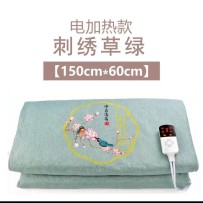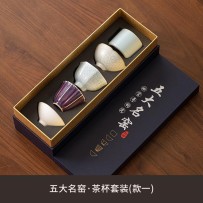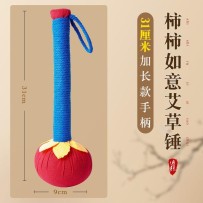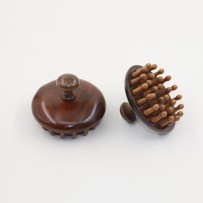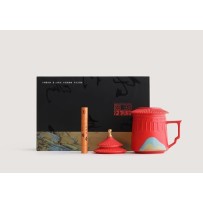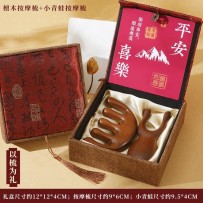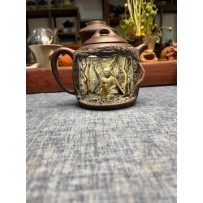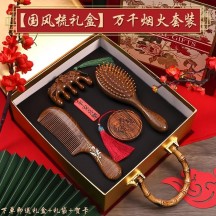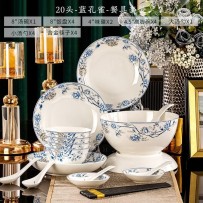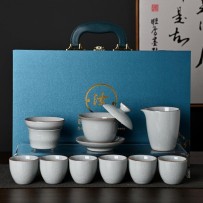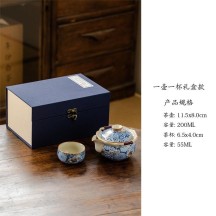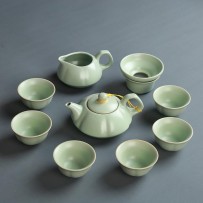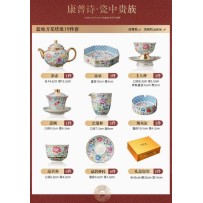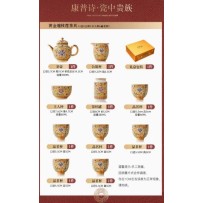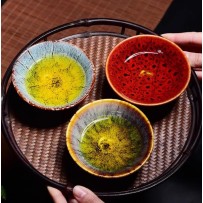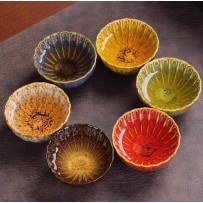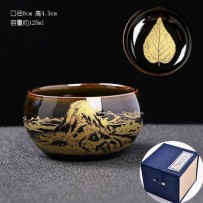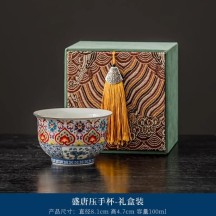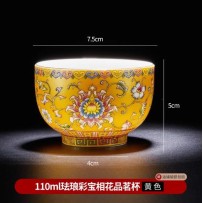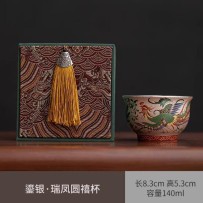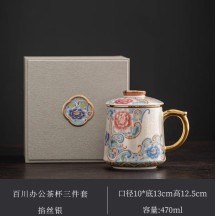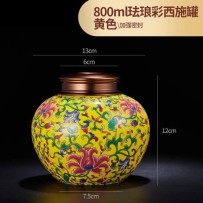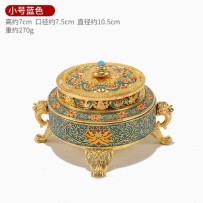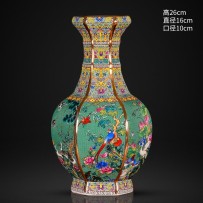The benefits of a moxa seat cushion mainly focus on providing warmth, dispelling cold, regulating menstruation, and improving cold hands and feet. The warming properties of mugwort help promote blood circulation, relieve menstrual cramps and diarrhea, and the cushion retains heat for a long time, which is beneficial to the body. Additionally, the natural aroma of mugwort has a refreshing and invigorating effect on the mind.
Subcategories
Gifting a tea set is a gesture of respect, making it suitable for giving to leaders, elders, or clients. It can also be given to newlyweds, as serving tea is an important part of Chinese wedding ceremonies. For traditional Chinese people, offering tea is a highly significant ritual.
The mugwort massage hammer is a health product that combines traditional Chinese medicine principles with modern massage technology. It helps relieve pain, reduce fatigue, and improve sleep quality.
The round massage comb, is primarily used to massage the scalp, promote blood circulation, and improve scalp health. Through the massaging action of its comb teeth, it stimulates acupressure points on the scalp, helping to unblock meridians and relax the head.
Gifting a cup symbolizes a deep bond and mutual trust between both parties. It conveys heartfelt wishes for the recipient to remain safe, healthy, and happy.
Sandalwood combs can stimulate acupressure points on the scalp and promote blood circulation, which may help relieve headaches, insomnia, dizziness, and may also aid in improving hair loss. In addition, the natural aroma of sandalwood has a calming and relaxing effect that can help improve sleep quality.
The Zisha teapot is a symbol of good fortune, prosperity, and the blessings of both longevity and happiness. This symbolism stems from its rich cultural heritage and historical background. In ancient times, Zisha teapots were exclusively used by royalty, nobility, and refined scholars, representing an elegant taste and a pursuit of sophistication and nobility.
A comb gift box is traditionally a symbol of affection, well-being, love, and smooth journeys in life
Blue and white porcelain, originating in China and renowned worldwide, is a type of high-fired underglaze ceramic featuring blue patterns on a white background. Commonly referred to simply as "blue and white," the term also denotes the decorative technique itself. Known for its fresh, elegant, and refined style, it is not only the most influential type of porcelain before industrialization but is also regarded as a representation of the Chinese aesthetic ideal.
In China, gifting a tea set is considered an elegant gesture of etiquette. Presenting a complete tea set represents care and respect for the recipient, while also reflecting the giver’s taste and cultural refinement. Giving a full set of tea ware symbolizes well-wishes for the recipient, hoping they enjoy a fulfilling life and lasting happiness.
In China, gifting a tea set is considered an elegant gesture of etiquette. Presenting a complete tea set represents care and respect for the recipient, while also reflecting the giver’s taste and cultural refinement. Giving a full set of tea ware symbolizes well-wishes for the recipient, hoping they enjoy a fulfilling life and lasting happiness.
Gifting a tea set is a gesture of respect, making it suitable for giving to leaders, elders, or clients. It can also be given to newlyweds, as serving tea is an important part of Chinese wedding ceremonies. For traditional Chinese people, offering tea is a highly significant ritual.
In China, gifting a tea set is considered an elegant gesture of etiquette. Presenting a complete tea set represents care and respect for the recipient, while also reflecting the giver’s taste and cultural refinement. Giving a full set of tea ware symbolizes well-wishes for the recipient, hoping they enjoy a fulfilling life and lasting happiness.
In China, gifting a tea set is considered an elegant gesture of etiquette. Presenting a complete tea set represents care and respect for the recipient, while also reflecting the giver’s taste and cultural refinement. Giving a full set of tea ware symbolizes well-wishes for the recipient, hoping they enjoy a fulfilling life and lasting happiness.
Made from natural mineral porcelain clay and crafted by hand, it releases the unique fragrance of artistic tea. During high-temperature firing, the specially prepared glaze undergoes a natural reaction, resulting in a distinctive surface texture that gives the teaware a timeless, vintage character.
In China, gifting a tea set is considered an elegant gesture of etiquette. Presenting a complete tea set represents care and respect for the recipient, while also reflecting the giver’s taste and cultural refinement. Giving a full set of tea ware symbolizes well-wishes for the recipient, hoping they enjoy a fulfilling life and lasting happiness.
In China, gifting a tea set is considered an elegant gesture of etiquette. Presenting a complete tea set represents care and respect for the recipient, while also reflecting the giver’s taste and cultural refinement. Giving a full set of tea ware symbolizes well-wishes for the recipient, hoping they enjoy a fulfilling life and lasting happiness.
In China, gifting a tea set is considered an elegant gesture of etiquette. Presenting a complete tea set represents care and respect for the recipient, while also reflecting the giver’s taste and cultural refinement. Giving a full set of tea ware symbolizes well-wishes for the recipient, hoping they enjoy a fulfilling life and lasting happiness.
Famille Rose is one of the porcelain decoration techniques, involving the transfer of the enamel painting method onto the ceramic body as an overglaze decoration. Famille Rose artworks require meticulous brushwork, often featuring fine, detailed painting with evenly applied colored glazes. The enamel decoration fits the shape of the vessel closely and has a glossy finish.
In China, gifting a tea set is considered an elegant gesture of etiquette. Presenting a complete tea set represents care and respect for the recipient, while also reflecting the giver’s taste and cultural refinement. Giving a full set of tea ware symbolizes well-wishes for the recipient, hoping they enjoy a fulfilling life and lasting happiness.
Cloisonné enamel is a unique craft that combines porcelain and copper. It was introduced to China via land routes from the Arabian Peninsula during the Yuan Dynasty and was originally known as "Dashi Kiln" ware. Ancient Chinese artisans quickly mastered the techniques of the "Dashi Kiln" and integrated them with traditional Chinese craftsmanship, creating a new and distinct form of metal cloisonné enamel with strong national characteristics—known as Jingtailan (Cloisonné).
Famille Rose is one of the porcelain decoration techniques, involving the transfer of the enamel painting method onto the ceramic body as an overglaze decoration. Famille Rose artworks require meticulous brushwork, often featuring fine, detailed painting with evenly applied colored glazes. The enamel decoration fits the shape of the vessel closely and has a glossy finish.
An incense burner, also known as a censer, is a vessel used for burning incense. Incense burners vary greatly in size, shape, and materials, and they are used across many cultures and religions. In many traditions, burning incense carries spiritual and religious significance, which has deeply influenced the design and decoration of incense burners.
The Six-Sided Vase, also known as the Hexagonal Vase, is a popular vase shape from the mid to late Ming Dynasty. It gets its name from its hexagonal, pillar-like body design.










